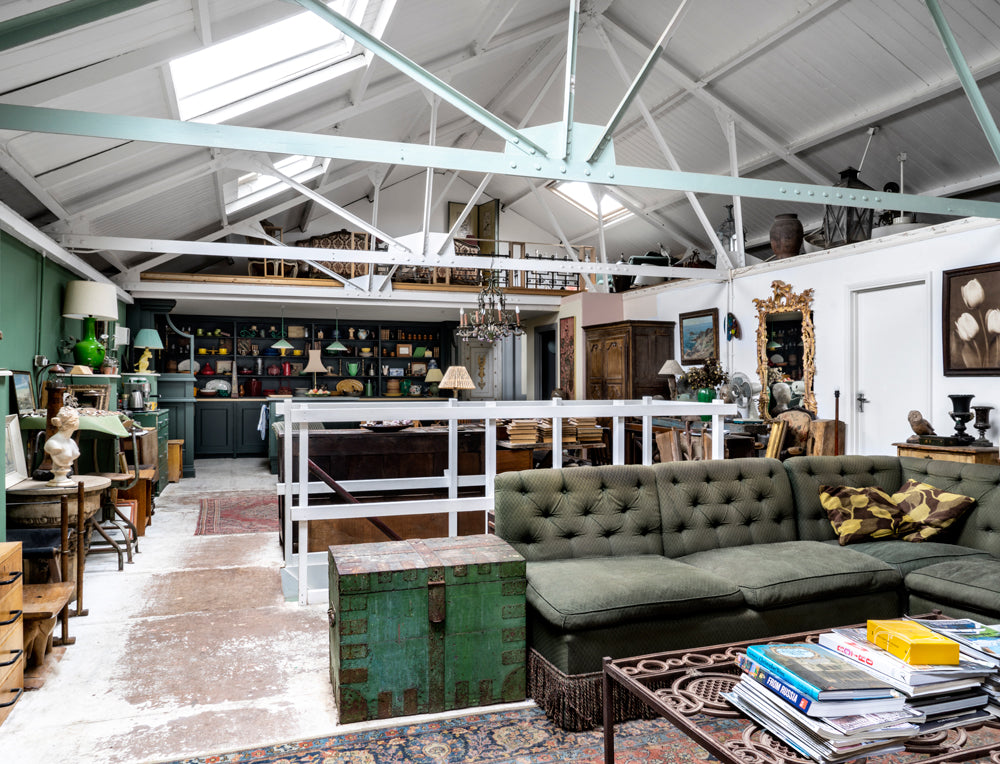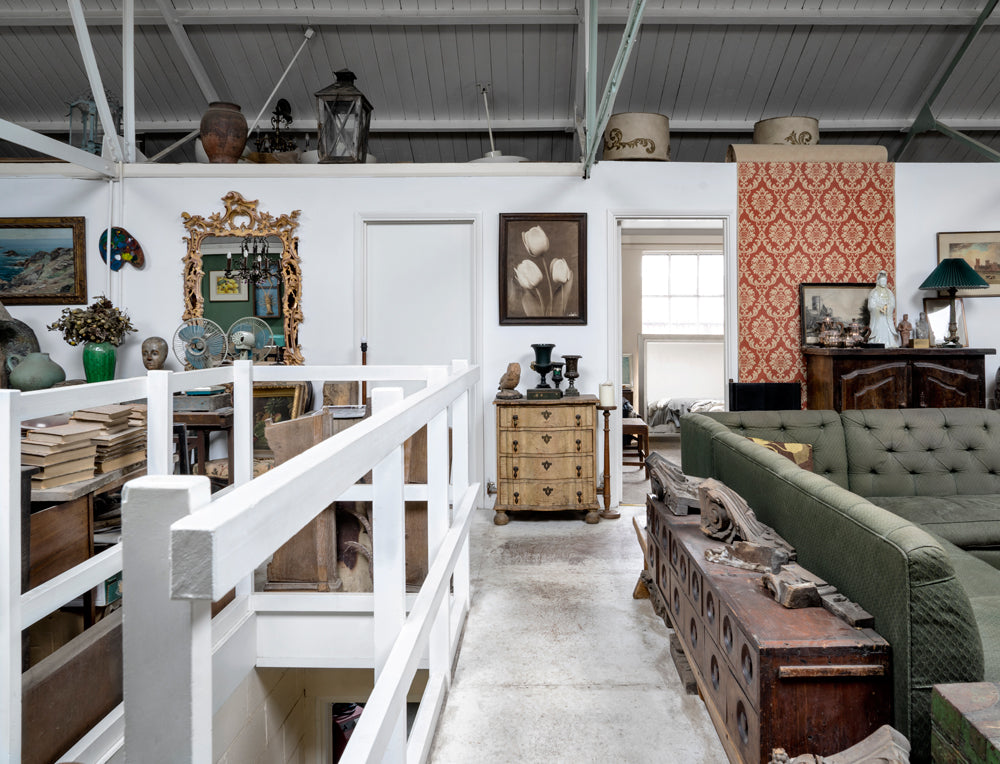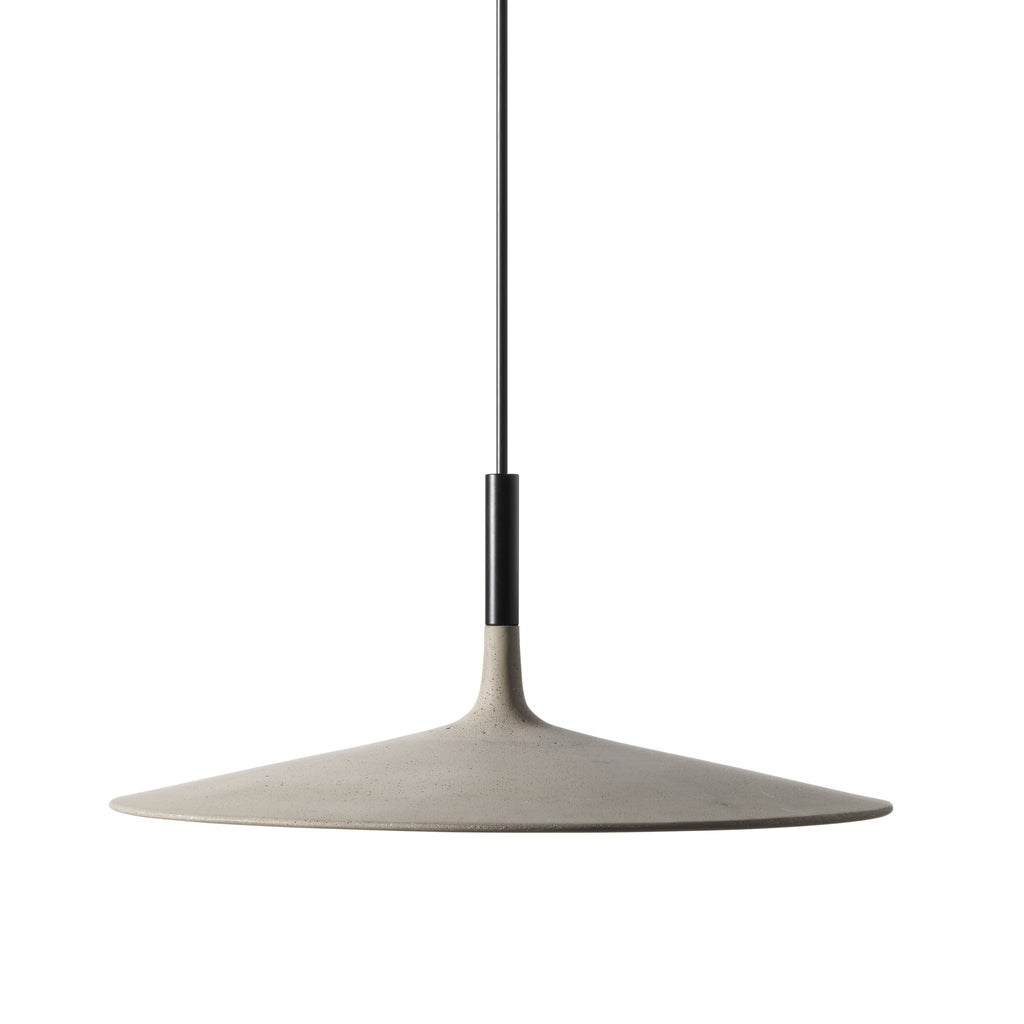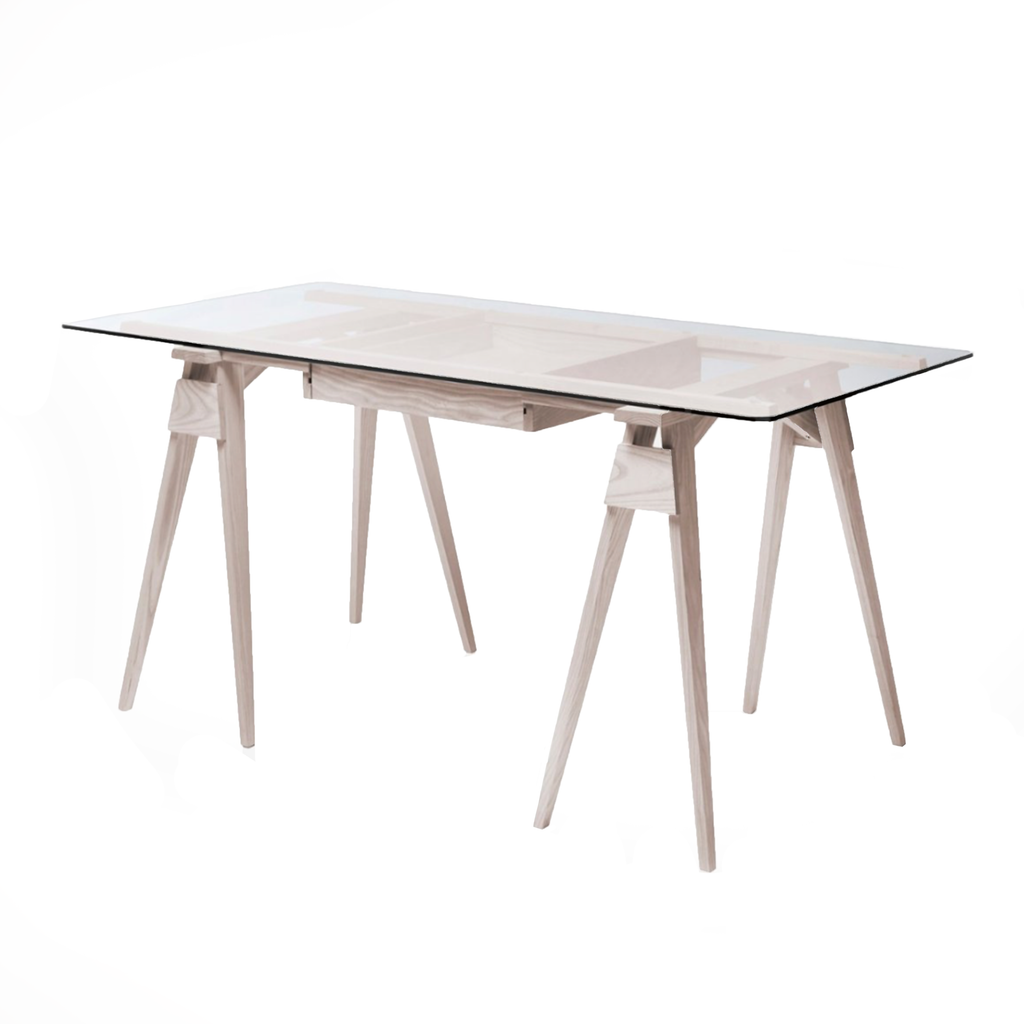
Handmade or hand-selected, we're proud to support exquisite craftsmanship and specialist skills. Join us as we sit down with artisans, curators and designers in our Meet The Designer series.

Driven by an inventive spirit and a passion for food, this independently owned British business is revolutionising oven design. And not only do they look amazing - the proof really is in the pudding. Read as we turn up the heat with the team at Harrison Ovens.
Where did Harrison Ovens begin?
Inspired by a passion for cooking with charcoal it took designer-maker Daniel Thumwood three years to develop the first Harrison prototype in his workshop in South West London. After countless dinner parties; friends, family and a few chefs encouraged Daniel to make the Harrison available worldwide.
Although initially launched for domestic use the Harrison is suited to commercial kitchens too with Michelin-starred celebrity chef Richard Corrigan purchasing two for use in his restaurants. The Harrison has become an aspirational product for professional chefs as well as passionate home chefs, looking for something a little different for their cuisine as well as aesthetics.
We hear you work closely with Michelin-star chefs. Does the way they work have influence over the design and use of your ovens?
The Harrison was first developed to enable homeowners the ability to recreate a restaurant–grade charcoal experience at home. Many restaurants have had this type of oven for years, but they tend to be large, heavy and unpractical.
In designing a high-performing oven for the home, we have managed to find a solution for chefs who were not happy with the charcoal ovens available for use in the commercial kitchen. Michelin-starred chefs like Richard Corrigan only use real fire for a section of their menu, so don’t need a big, raging furnace in their kitchen. A Harrison oven is very British in its engineering; its refined control allows for chef like precision in cooking which is vital when producing food at this level.
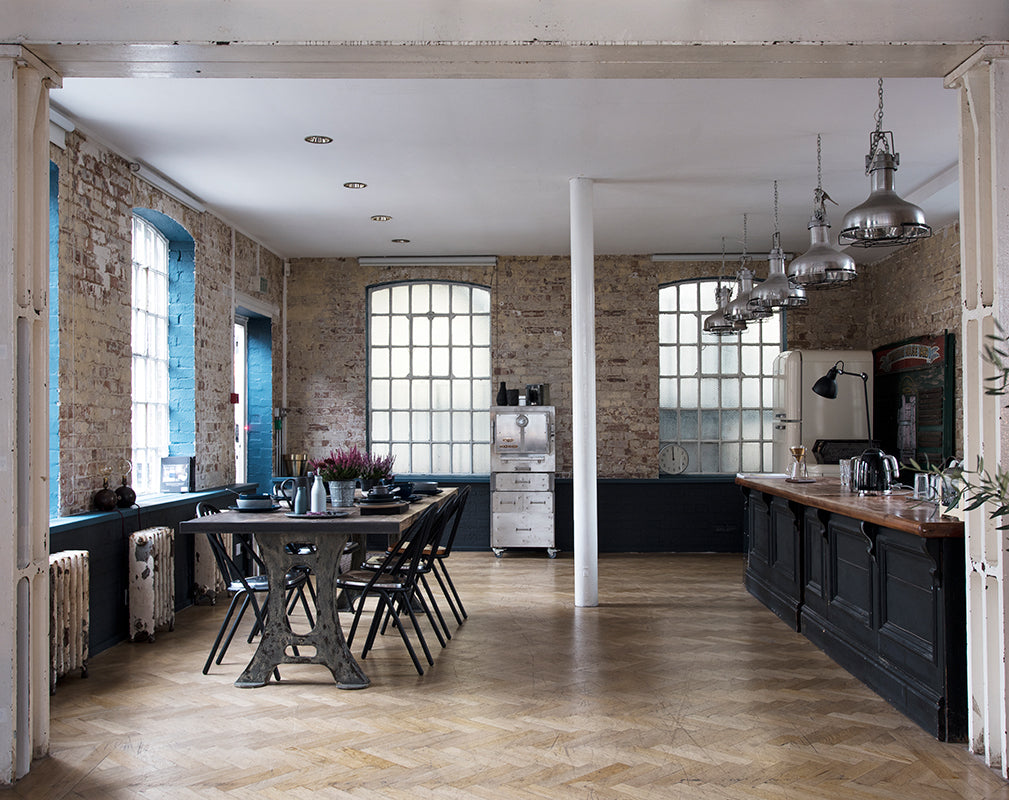
“A Harrison oven is very British in its engineering; its refined control allows for chef like precision in cooking which is vital when producing food at this level.”
Each series has such a distinct look and feel. Can you tell us a little about the design and manufacturing process?
The oven's design puts functionality and performance first. The size of the chamber, the high-grade stainless steel and the insulation are the key ingredients for the performance of the oven. Rather than relying on direct heat from the embers, The Harrison has been designed to utilise all methods of heat transference: direct, radiation, conduction and convection.
The aesthetics of the ovens came from Daniel’s degree in art history; his eye for proportion and form helped to create the simple, but robust design. During the design process, Natalie was also working on the brand advertising for Bentley Motors. It was her colleagues that inspired the classic British automotive feel of the oven’s design, the color-range of the Classic Collection and also the logo, which is reminiscent of the British Automotive Industry in its glory days - we can say with confidence that The Harrison is the Bentley of Charcoal Ovens!
You’ve been described as ‘an oven company like no other’ what is it about Harrison Ovens that sets you apart?
Using only the highest-grade British-sourced materials, each component of a Harrison Oven is handmade by Daniel and his father. We then contract a small, family run manufacturer to complete larger jobs like door folding. Final assembly is then done in-house. The unique combination of size, material and heat transference sets a Harrison apart in the way that it cooks fast, whilst retaining both moisture and flavour. Size and weight allow it to be transported easily.
When you’re not in the workshop or on the road giving demonstrations do you have a favourite dish you like to prepare?
We are always experimenting but a few classics include banana bread, sourdough, smoky mushroom porridge, cold-smoked chorizo and côte do boeuf as well as simple dishes like whole sea-bass and good quality steak. Both take only two minutes to prepare and are dripping with flavour and moisture. We also roast coffee at home, which makes the whole house smell amazing.

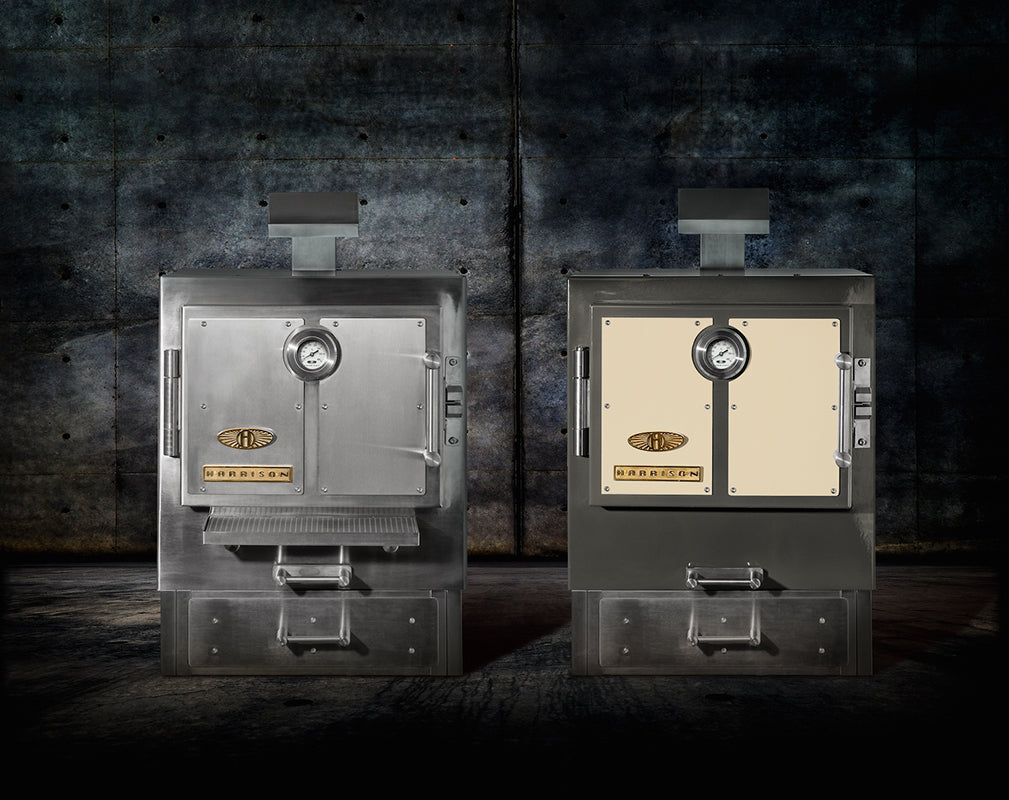
Using only high-grade British materials each component is handmade by Daniel and his father.

Could you explain the advantages of cooking with a fuel source such as charcoal or wood as opposed to conventional electricity or gas?
Speed: with temperatures of over 300 degrees, cooking time is a fraction of that of a conventional oven. Heat is also evenly transferred.
Moisture retention: cooking fast, in a chamber at high-heat seals in moisture – if you place vegetables in the oven whole, they literally steam themselves on the inside, which retains all the vegetable’s moisture and flavour.
Flavour: not only is the flavour sealed in, there is also the added benefit of being able to add a signature smoky-note to food. As well as charcoal, you can cook using wood which again adds different flavours and aromas.
Versatility and creativity: a solid-fuel oven can be used for anything a conventional oven can do but with more interesting results. Baking a cake gives the crust a wonderful toffee-like texture. Sourdough bread has a smoky infusion.
Flexibility: a Harrison doesn't need to be hooked up to any utilities, so can be wheeled from kitchen to garden easily. We have one on the back of our Land Rover Defender, which we use for off-grid cooking and parties.
Are particular foods better suited to one fuel source over another?
If you just feel a bit peckish and want a fish-finger sandwich, it might be a bit extreme to fire-up your Harrison, but there isn’t anything you can’t achieve on the Harrison over other fuel sources.
With names like Kale, Parrot Fish, and Horseradish - many of the colours, or should we say flavours, of your Classic Collection, are inspired by specialist cooks ingredients. What was the rationale behind this?
It was an idea we came up with whilst looking at a Farrow and Ball colour chart!
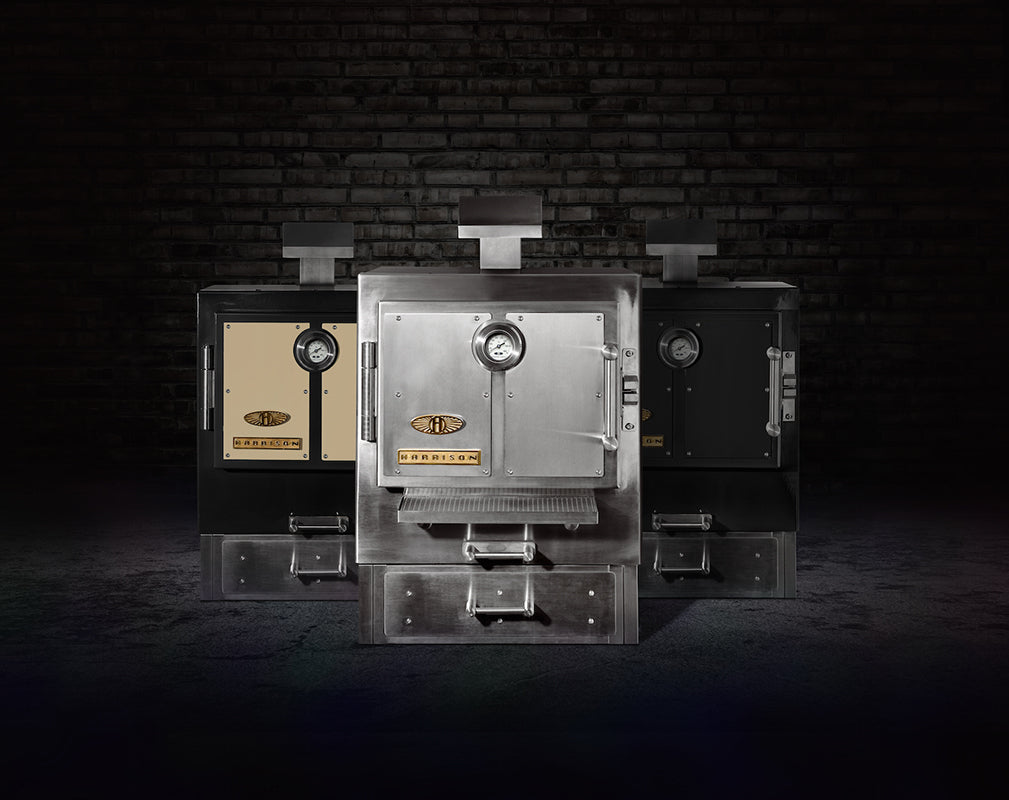
What informed your use of materials?
Functionality and endurance is the key. Aesthetics came secondary.
Besides the obvious style points, could you explain a little about the benefits of investing in a bespoke, artisan oven?
So long as it is treated with respect, a Harrison Oven will last a lifetime and can be handed down generations, rather like an Aga. You just don’t get that level of endurance from anything mass-produced. Daniel also designed the oven to have minimal moving parts that can go wrong, in fact the only thing that may need replacing every 10 years or so is the pin the hinge.
The beauty of the bespoke service is that we can work with designers, chefs and homeowners on their projects and make adjustments to their requirements i.e. which side the door opens, the height of the cabinet, the colour (we can produce most colours, but will need to test any colours not in our range, to make sure the pigments react OK with the heat), we make bespoke covers to match a colour scheme and can even make other elements of the real-fire kitchen i.e. grills and charcoal pits.
Also, each oven comes with its own handmade number plate and a certificate of authentication, sealed in wax and signed by Dan, so you know you have something that is unique and individual that has been made with care.
Rumour has it your first workshop was located in a disused boiler house in South London. Do you know much about its former use?
Harrison’s HQ was originally located in a disused boiler house, which was once part of a leather foundry in Colliers Wood, South West London, an area steeped in industrial history and creativity. It was also the original location of William Morris’ print works. Collier’s Wood was also had a coal mining industry back in the day - a collier is another name for a coal miner.
We have since moved to our workshop to Ramsgate, as we longed to live by the sea. Ramsgate has an amazing Royal Harbour and a long history of sea-faring and Naval activity. The artist Van Gogh also famously lived in Ramsgate and it has a long creative/artistic history.

